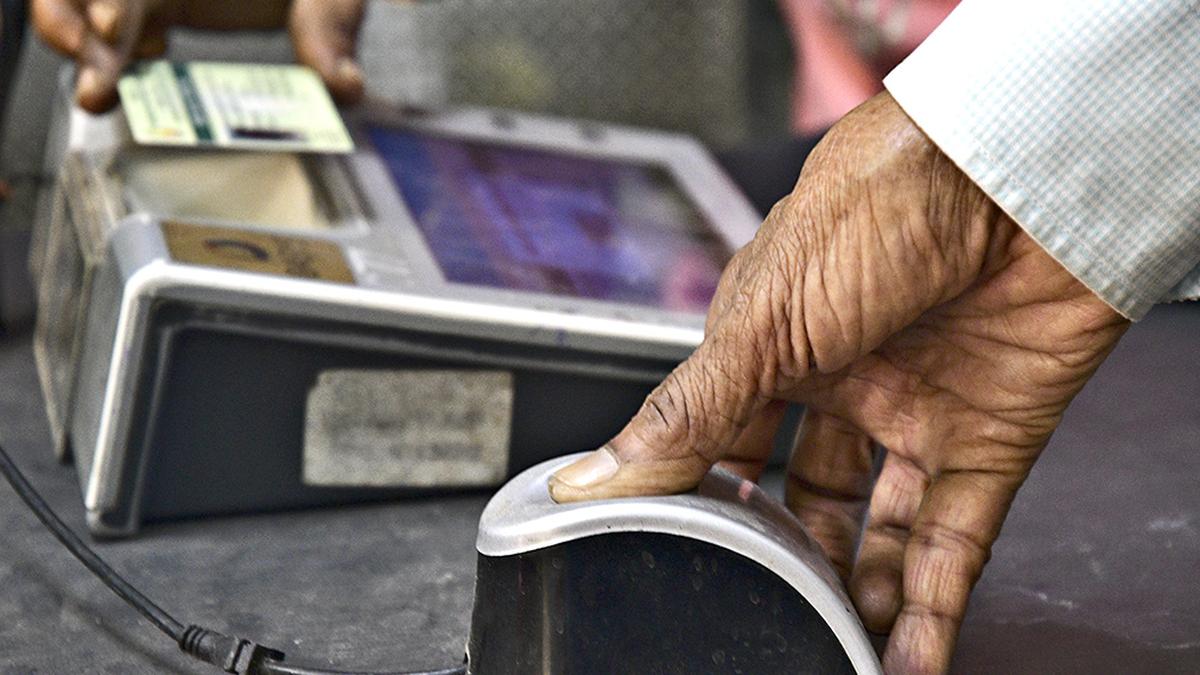
Copyright infringement not intended
Picture Courtesy: Financial Express
Context: The Reserve Bank of India (RBI) Governor has announced a temporary measure involving the Cash Reserve Ratio (CRR), which is the portion of deposits that banks are required to maintain with the central bank.
Details
- The RBI Governor announced that Indian banks must maintain an incremental CRR of 10% on the rise in deposits between May 19 and July 28. This requirement will be in effect for the fortnight starting August 12.
Highlights of the Announcement
- Purpose of the Measure: The purpose of this temporary measure is to absorb liquidity from the return of high-denomination notes that was announced by the central bank in mid-May. This liquidity overhang needed management to ensure the stability of the financial system.
- Temporary Nature: Governor Das emphasized that this measure is temporary in nature. He assured that even after the temporary impounding, there will still be adequate liquidity in the system to meet the credit needs of the economy.
- Review Date: The measure will be reviewed on September 8 or earlier. The impounded funds will be returned to the banking system ahead of the festival season, which suggests that this measure is not intended to be a long-term policy change.
- Liquidity Surplus: The banking system has experienced a liquidity surplus, with the average being around Rs 2.5 lakh crore ($30.18 billion) in August, which is higher than the previous month of July.
- Discontinuation of Reverse Repos: The RBI has stopped conducting lower-durability variable-rate reverse repos after auctions were not fully subscribed about a month ago. Reverse repos are a tool used by central banks to manage liquidity by absorbing excess funds from banks.
A trader from a private bank mentioned that banks will need to maintain excess CRR for the next two fortnights, leading to a reduction in the current liquidity surplus. The amount that could be withdrawn due to this measure is estimated to be less than one trillion rupees.
Incremental Cash Reserve Ratio (CRR)
About
- The Incremental Cash Reserve Ratio (CRR) is a monetary policy tool used by central banks, including the Reserve Bank of India (RBI), to manage liquidity in the banking system.
- CRR is the portion of a bank's deposits that it is required to hold with the central bank. The Incremental CRR is an additional requirement imposed on banks for a specific period to absorb excess liquidity from the banking system.
Features
- Temporary Nature: The Incremental CRR is not a permanent measure; it's implemented for a short duration to address a particular liquidity issue or economic circumstance. It's not a long-term policy but rather a tool used when needed.
- Specific Time Frame: This refers to the fact that the Incremental CRR is not a continuous or ongoing requirement. It's applied over a defined period that is linked to a specific event, policy change, or economic situation. Once the situation is resolved or the designated period ends, the requirement may be lifted.
- Targeted Absorption: The purpose of the Incremental CRR is to absorb excess liquidity in the banking system that might arise due to particular events, policies, or economic conditions. By mandating banks to hold a higher reserve, the central bank aims to control the flow of money and manage the liquidity situation more effectively.
- Graduated Approach: The central bank typically specifies a certain percentage of additional CRR that banks need to maintain on the incremental deposits they receive during the specified period. This additional percentage might be higher than the regular CRR. The graduated approach ensures that the impact on banks' liquidity and lending activities is proportional and manageable.
Overall, the Incremental CRR is a tool used by central banks to fine-tune the liquidity levels in the banking system for a limited duration, addressing specific circumstances that require temporary measures. It allows the central bank to exert a targeted influence on the economy without committing to a permanent policy change.

Significance
Liquidity Management
- Excessive liquidity in the banking system can lead to an array of problems, including inflation and speculative activities. By implementing Incremental CRR, central banks can regulate the level of liquidity in the financial system. This ensures that there's an appropriate amount of money available to support economic activities without allowing excess funds to drive inflation or create financial imbalances.
Monetary Policy Control
- Central banks use monetary policy to influence economic growth, inflation, and other macroeconomic factors. The CRR, including the incremental component, is a tool that central banks can utilize to control the money supply. When the central bank wants to tighten monetary policy, it can increase the CRR, which restricts the amount of money that banks can lend. Conversely, when the central bank wants to stimulate the economy, it can lower the CRR. This allows central banks to exercise direct control over credit availability and lending conditions.
Price Stability
- An oversupply of money in the economy can lead to rising prices, commonly known as inflation. Incremental CRR plays a significant role in maintaining price stability by absorbing excess liquidity that could otherwise contribute to inflationary pressures. By ensuring that there is an appropriate balance between money supply and economic activity, central banks can help prevent rapid price increases and their potential negative effects on consumers and businesses.
In essence, Incremental CRR is a tool that central banks use to fine-tune the economy's financial conditions, enhance the effectiveness of monetary policy, and promote a stable economic environment by managing liquidity and mitigating inflationary risks.
Challenges that need to be carefully managed by central banks and financial institutions
Liquidity Shortage
- Setting the incremental CRR requirement too high can lead to a shortage of liquidity in the banking system. This shortage might restrict banks' ability to lend, affecting economic activities and the smooth functioning of financial markets. If the liquidity shortage becomes severe, it could potentially lead to increased interest rates and market instability.
Banks' Profitability
- Requiring banks to allocate a higher proportion of their funds to reserves can reduce the amount of money available for lending and other revenue-generating activities. This can impact banks' profitability, especially if their lending income is a significant part of their earnings. Striking a balance between maintaining adequate reserves for stability and allowing banks to remain profitable is a challenge.
Communication Challenges
- Communicating the rationale behind implementing incremental CRR and managing market expectations can be complex. If the central bank's intentions are not communicated, it might lead to uncertainty and market volatility. Central banks need to effectively communicate the reasons for the measure, its temporary nature, and its expected impact on the financial system.
Addressing these challenges requires careful consideration, planning, and clear communication strategies. Central banks need to assess the potential impact of Incremental CRR and its duration to ensure that the benefits of using the tool outweigh the potential negative consequences. Monitoring market reactions and adjusting communication strategies accordingly can also help in managing the challenges associated with Incremental CRR implementation.
Way Forward
Gradual Implementation
- Implementing incremental CRR in a phased manner allows banks to adapt to the changes without causing abrupt disruptions in their operations. This gradual approach can help minimize sudden shocks to the banking system and allow banks to make necessary adjustments to their lending and liquidity management strategies.
Clear Communication
- Transparent and clear communication is essential to ensure that all stakeholders, including financial institutions, businesses, investors, and the general public, understand the reasons for implementing incremental CRR. Conveying its temporary nature, purpose, and expected outcomes can help mitigate uncertainty and maintain market stability.
Holistic Approach
- Incremental CRR should be considered as part of a comprehensive set of monetary policy tools. Central banks often use a combination of measures to manage liquidity, interest rates, and economic conditions. Combining incremental CRR with other tools allows for a more balanced and effective approach to achieving desired liquidity management objectives.
Data-Driven
- Any decision to implement incremental CRR should be based on a thorough analysis of relevant data. Central banks should assess the liquidity situation, economic conditions, and potential impacts on various stakeholders before implementing such measures. Data-driven decisions enhance the accuracy and effectiveness of policy actions.
Regular Review
- Monitoring the effectiveness of incremental CRR is crucial to ensure that the intended outcomes are being achieved. Regular reviews of its impact on liquidity, lending, interest rates, and overall market stability can guide central banks in making adjustments as needed. Flexibility in response to changing economic conditions is important for maintaining the tool's effectiveness.
.jpg)
Conclusion
- Incremental CRR is a specialized tool that central banks use to manage short-term liquidity imbalances. It requires careful implementation, monitoring, and coordination with other policy tools to achieve the desired economic outcomes while minimizing adverse effects on banks and financial markets.
Must Read Articles:
MPC MEET HIGHLIGHTS: https://www.iasgyan.in/daily-current-affairs/mpc-meet-highlights
|
PRACTICE QUESTION
Q. What are the key features and significance of Incremental Cash Reserve Ratio (CRR)? How does it impact the banking system, and what challenges does it pose? What strategies could be employed to navigate these challenges and pave the way forward for effective implementation?
|
https://www.republicworld.com/business-news/india-business/rbi-asks-banks-to-set-aside-incremental-cash-reserve-ratio-articleshow.html
Array
(
[0] => daily-current-affairs/incremental-crr
[1] => daily-current-affairs
[2] => incremental-crr
)








